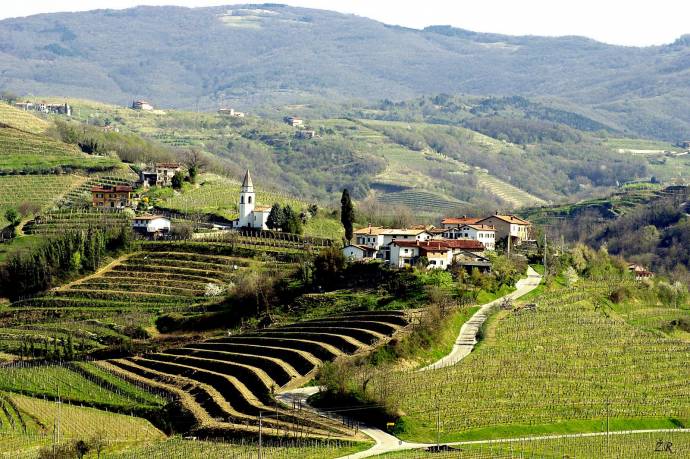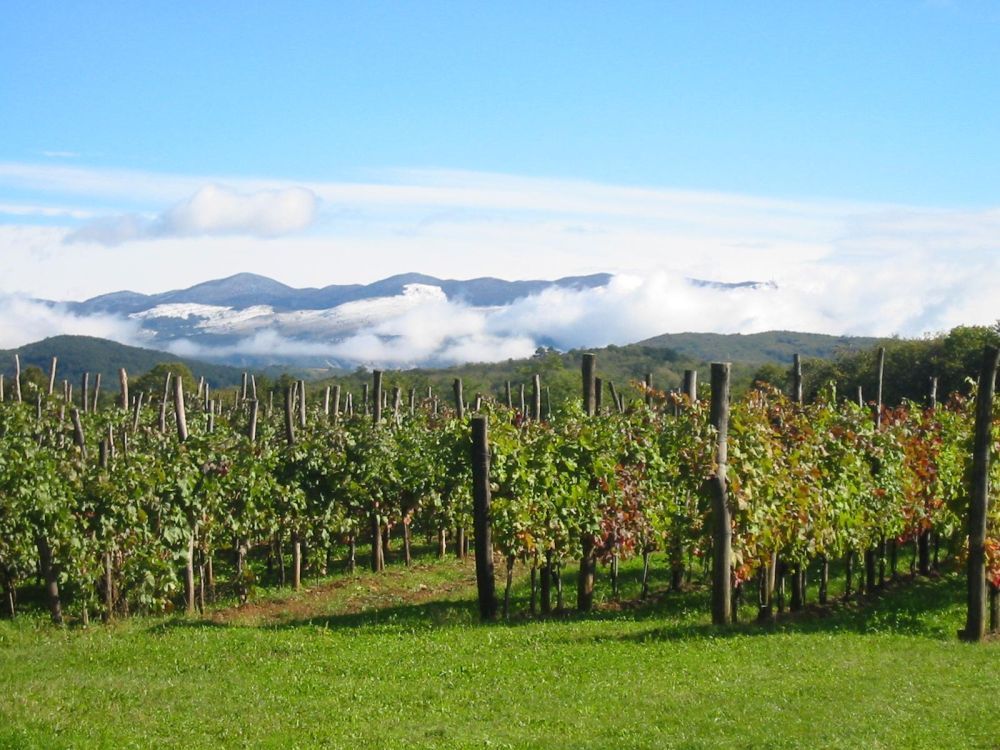January 22, 2018
The second Slovenian wine growing region, Primorska (Littoral), literally meaning “by the sea”, is home to Slovenia’s most known red wines as well as some crisp white ones (low on sugar and alcohol and high on acidity), which when cooled down are very drinkable on hot summer days, especially if served with lunch or dinner, and even more so if that dinner is fish.
A warm sub-Mediterranean climate, variety of soil and good use of the mostly hilly terrain give wines originating from Primorska a fuller body, high complexity and greater extractive richness, which have allowed this region to adopt Western wine-related fashions more readily, and that includes the design of labels.

Labels of the Italian-Slovene wine producers Franco and Daniella Terpin (Friulia, Italy)
The Primorska wine growing region is divided into four sub-regions, each with its distinct characteristics: Vipava Valley, Goriška brda, Koper or Slovenian Istria and Karst (the Karst plateau, near Italian border and Trieste).
In the detailed map of all the Slovenian wine growing regions that we found on O vinu website of the news site Finance.si, the growing regions of the Littoral are seen on the western side of the map (gray), from top down (North to South): Goriška brda, Vipava Valley, Karst and Koper-Istria.
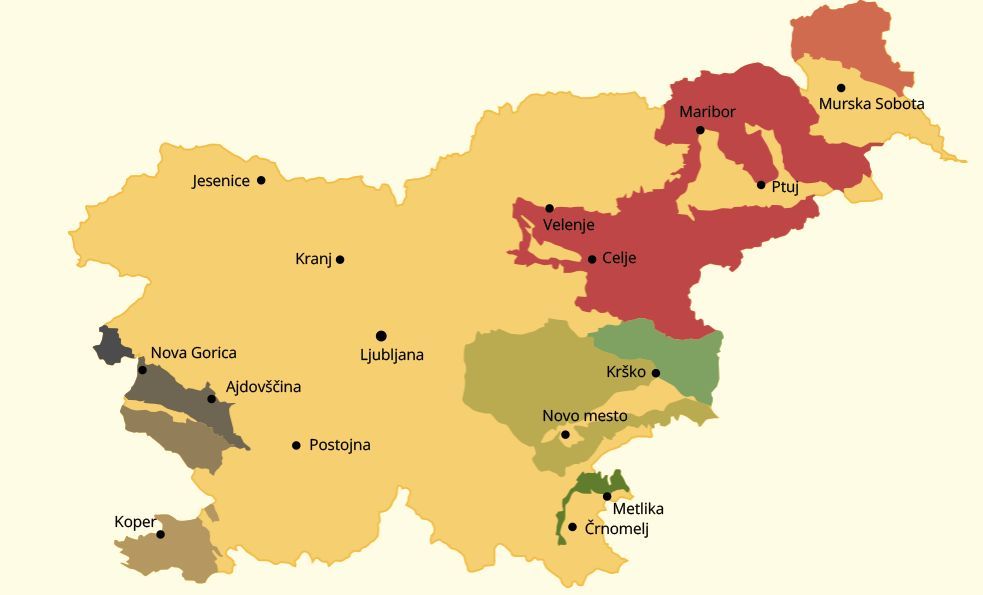
Vipava Valley
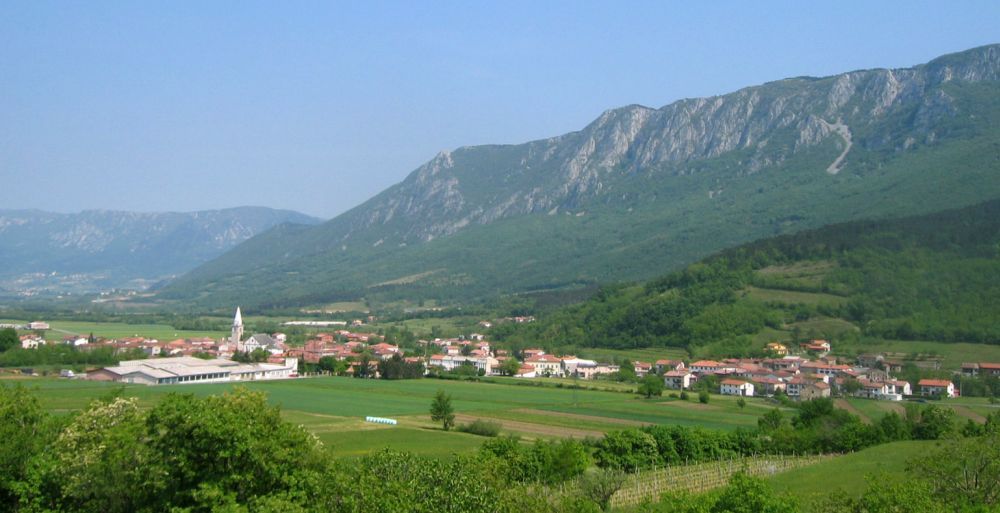
Podnanos, Public Domain, WIkipedia
Vipava Valley stretches from a high hill called Nanos, or rather from the village under the hill called Podnanos (under Nanos), and further west the Italian border. A strong gusty wind called the Burja, characteristic of this region, can stop the traffic but seems to cause no damage to the vineyards. These mainly grow at the low elevations of 35 to 300 metres above sea level, on land that used to be covered with sea water, although many millions of years ago. Sea sediments of flysch in alternate layers of sandstone, as found in the Vipava valley, are considered the best vine growing soils. White and red vine varieties can be found in the Vipava Valley, and the autochthonous varieties that are becoming more and more popular are Zelen, Pinela and Klarnica.
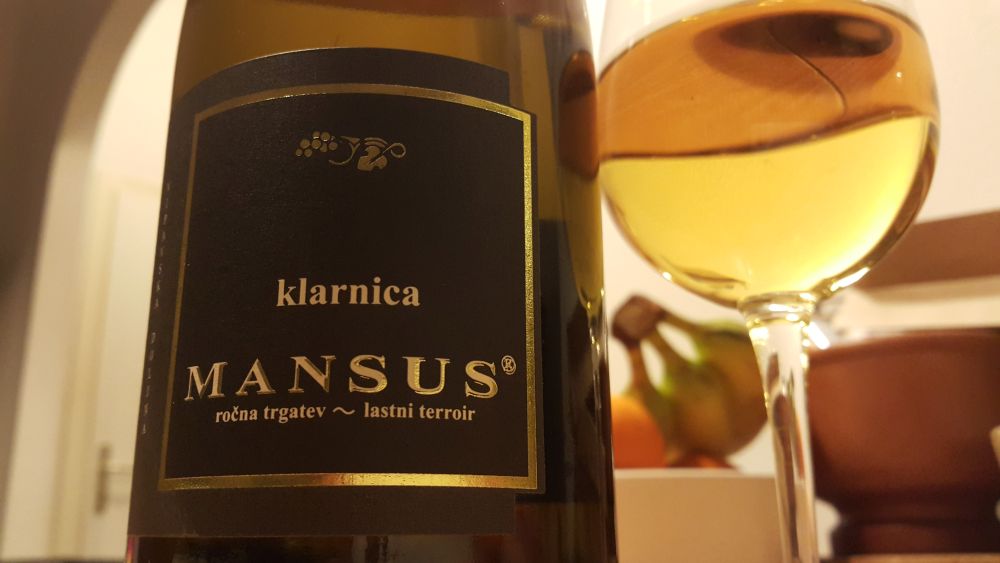
Goriška Brda
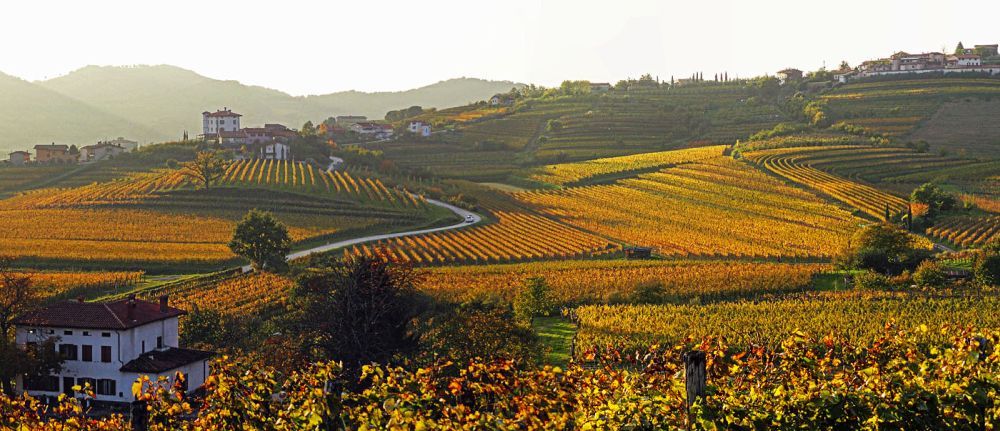
Photo: jamsina Pogačnik, Wikipedia, CC BY-SA 4.0
North-west of Vipava Valley is the hilly terrain of Goriška brda, with a characteristic Mediterranean landscape. Vines here have the company of olive, cherry and peach trees. Goriška borders Friula, also a wine growing region, where a Slovenian minority lives on the Italian side, and also grows wine.
Similar to the Vipava Valley, the same long-gone sea that shaped the soil there also contributed to the structure of the grounds in Goriška brda. The withdrawing sea waters left behind layers of flysch, sandstone and limestone, while at the same time cut into the soil, forming little hills and valleys that constitute what the Slovenian language knows as gorice (little mountains). This soil, low on humus, phosphorous, potassium and other nutrients, is perfect for viticulture. and not much else would prosper under such conditions.
The climate, on the other hand, is very comfortable, with mild winters and hot but not too dry summers. Since vines grow to the elevation of 600 metres, we get quite a variety of wines from Goriška brda with regard to their complexity and richness, which is mostly a characteristic of wine that comes from the lower growing regions (sivi [gray] pinot, chardonnay, merlot, cabernet), while wines produced at higher elevation turn out more elegant, lower in alcohol and higher on acidity, and therefore somewhat more refreshing and drinkable. Perhaps the most known local variety from Goriška brda is Rebula.
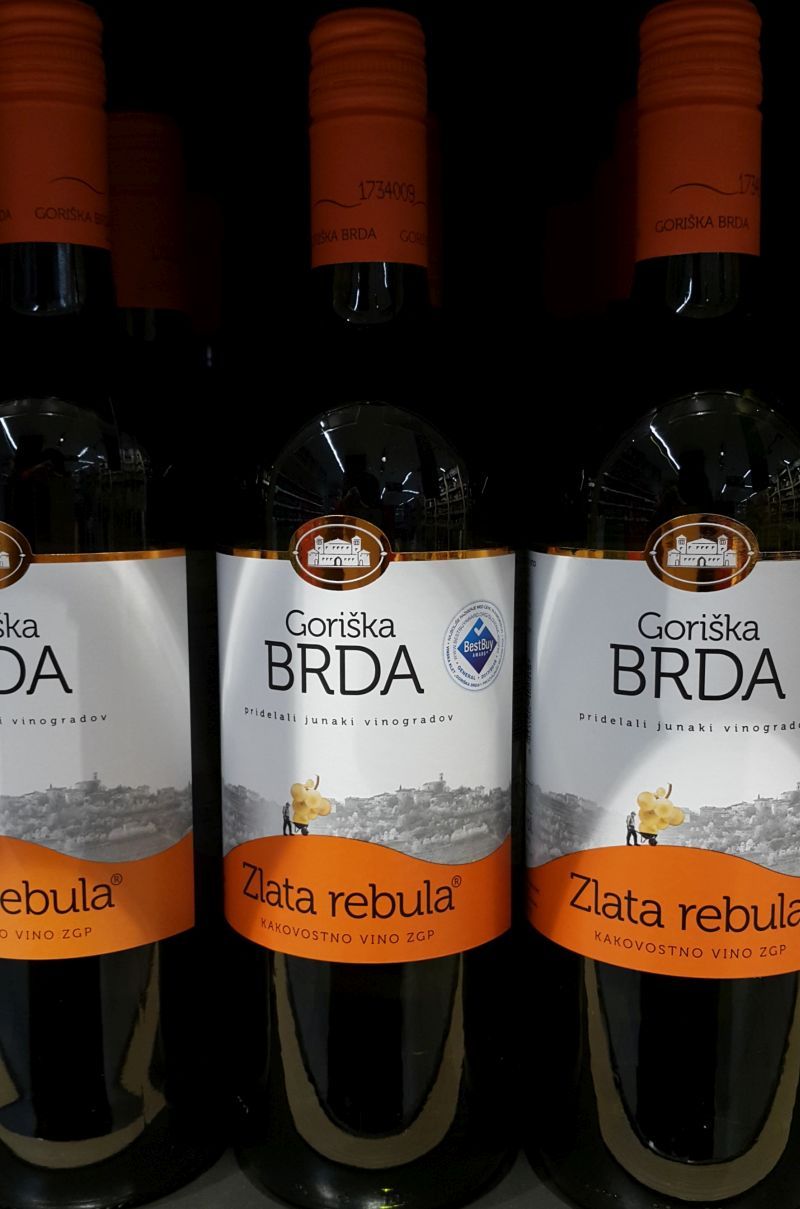
Koper-Istria

Photo: Jamina Pogačnik, Wikipedia CC BY-SA 4.0
The main variety of the coastal region of Koper and Istria is undoubtedly Refošk (Refosko). This region has been cultivated since at least Roman times, so wherever we go we can find terraces and signs of cultivated land under every bush. Besides Refošk, the most common varieties are also malvazija (malvasia), merlot, cabernet sauvignon, and syrah.

Karst plain
Photo: Karst, Nanos in the bakground, wikipedia, public domain
The Karst region is dry and windy (remember the Burja), but its main characteristic is its red soil, also known as terra rossa, which allows production of a special regional variety of wine, namely Teran. The vine variety of Teran is Refošk (Refosco), which has long been grown in the red soil of the Karst. Teran is a wine with a protected designation of origin (PDO), or posebno tradicionalno poimenovanje (PTP) in Slovenian. It contains a lot of iron, is red as blood, and goes well with meat and game.
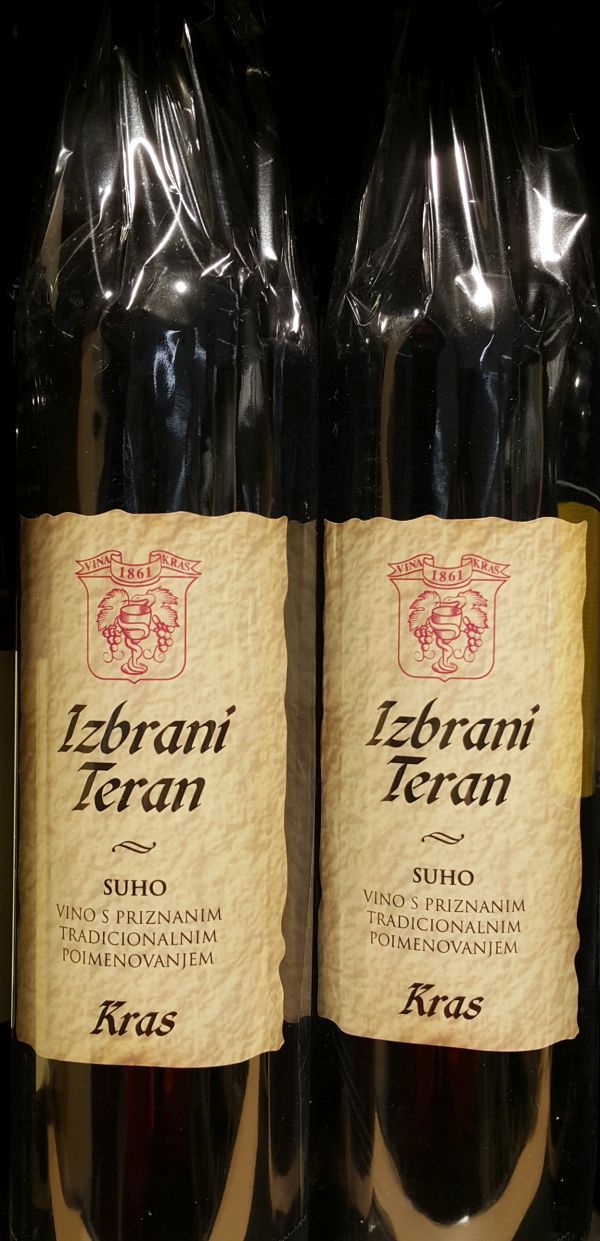
In our next post we’ll look into our last wine growing region, Posavje, or the Lower Sava Valley, perhaps best known for Cviček, but with a lot more of interest besides. Na zdravje!

